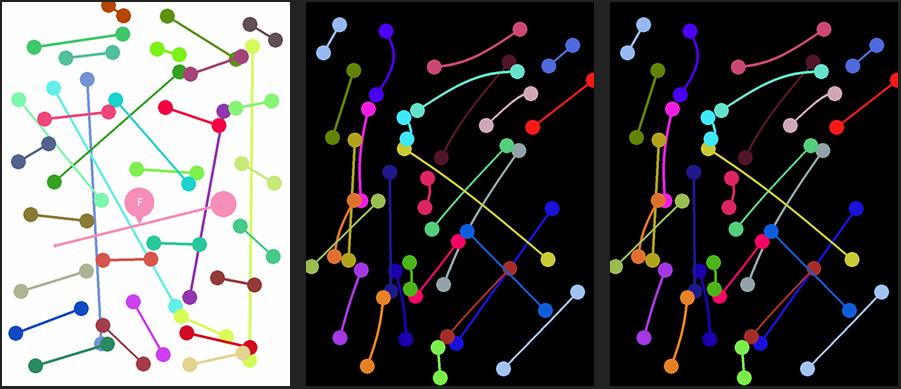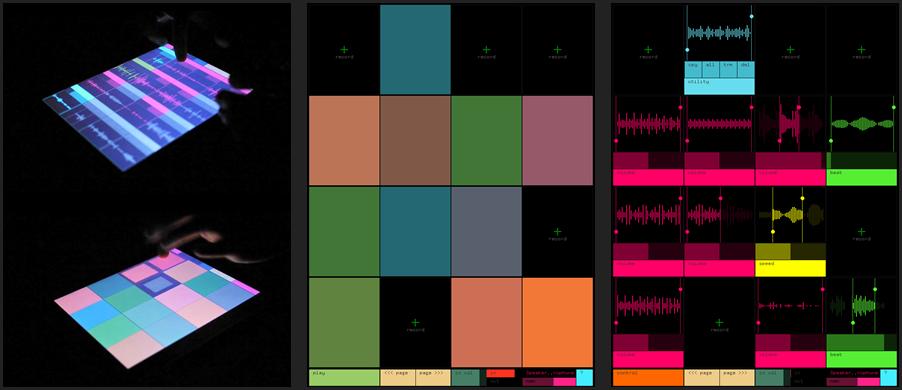How to make beautiful music (audibly & visually) without being a musician
Composing and representing music visually has traditionally been through music notation. Using a 5 lined “staff” or “stave” as a framework, black circles with lines are drawn to represent pitch and length of notes with other markings such as “slur” or “staccato” to represent phrasing and articulation.
Experienced musicians can get a good impression on how a piece should sound just by reading these notes and markings on the page. But to everyone else, this is a foreign language. What if you can’t read music? Even worse: what if you can’t play an instrument? Music is consumed worldwide by musicians and non-musicians. So, in a perfect world, producing music should also be accessible to all.
Luckily through the digital revolution – the switch from analogue to digital – there has been a big change in the way music is produced and consumed.
Kusek and Leonhard (2005) in their book The Future of Music discuss how advances in digital technology, including personal computers, digital recorders, the internet, legal online distribution services and illegal p2p services have already changed the music industry – through technology. Due to these technologies it has made it easier for artists and fans to create and distribute music – without heavily relying on the recording industry like in the past. For example, many artists and recording engineers are able to record high-quality albums from homemade studios using sophisticated equipment that was once too expensive to purchase.
Computers are now used to represent music in different forms, not just in notated forms. According to Donaldson & Lamere (2009), computers represent music in three ways:
- Score – as MIDI data
- Signal – as digital wave form
- Association – through tags (folksonomy), people or other songs
We see more and more today that the connection between audio and visual is becoming stronger. Through visualisations, the average person who does not read music or play instruments are able to understand music better. Digital waves are used to represent sounds in terms of three basic components: amplitude (volume), frequency (pitch) and time.
In addition to representing music, visualisations are also now incorporated into musical instruments to aid composition without musical knowledge.
Let’s look at some examples below.
The Tenori On, created by media artist Toshio Iwai and Yamaha (the original WHITE was released in 2005, ORANGE released in 2010), uses a matrix of 16×16 LED lights on a stunning visual interface and samples on layers to produce electronic music.
Tenori On Demo performance
Bill Bailey, UK comedian uses the Tenori On live in performances and demonstrates how “familiar images” (like the Nazi Swastika) or playing over a crowd sourced pattern are so simple and shows “without question how user-friendly this product is” (Tony Young, 2010).
Bill Bailey – Beauty from Hatred
Coder, artist and musician Amit Pitaru created Sonic Wire Sculptor – a musical instrument and interactive museum installation, which turns 3D drawings into sound in a way that deeply connects audio and visual composition. It requires little music or drawing ability to create a piece aesthetically and visually pleasing.
Sonic Wire Sculptor as an iPhone app
Pitaru demonstrating the early Sonic Wire Sculptor live
Two honourable mentions are Squiggle and SoundYeah developed for the iPad by Henry Chu. Squiggle is more of a novelty application of drawing lines that sound like guitar strings, while SoundYeah is based on recording samples in wave form and using the iPad as a sample pad.
Squiggle
SoundYeah
So what do you think? Are these gimmicky inventions/iPod applications producing beautiful music or only nice-looking visualisations connected to sound? I think it’s great that non-musicians can now create ‘a sort’ of music however the quality of the music compositions may not be able to compare with people with a musical background. But who am I to say what is good music anyway.
—————-
Donaldson, J. & Lamere, P. (2009) Using Visualisations for Music Discovery. ISMIR 2009 Retrieved 27 April 2011 from http://sites.google.com/site/musicviz2/home
Kusek, D. & Leonhard, G. (2005) The Future of Music: Manifesto for the Digital Music Revolution. Boston, Massachusetts: Berklee Press, 2005, ISBN 0-87639-059-9
Young, T. (2010) Yamaha Tenori On Review Retrieved 27 April 2011 from http://www.tonylongmusic.co.uk/keyboards-and-modules/yamaha-tenori-on-review/

